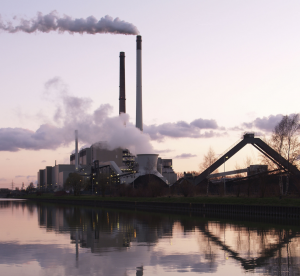
By Natalie Karas, Michael Panfil, and Rama Zakaria
Department of Energy (DOE) Secretary Rick Perry recently proposed that the Federal Energy Regulatory Commission (FERC) provide new revenues and guaranteed profits to the owners of inefficient and aging coal and nuclear power plants at the expense of American homeowners and businesses. These aging units are losing out to more efficient and innovative ways to generate power, reduce peak demand, and foster participation and competitive in the markets. EDF filed comments – separately and with a coalition of environmental organizations – today opposing DOE’s proposal to diminish, if not destroy, the integrity of competitive wholesale electricity markets.
The proposal is plagued by both procedural and substantive infirmities. It prevents informed outcomes by shortening FERC’s generally lengthy rulemaking process to a mere 60 days – offering little time for key stakeholders to participate. And it directs an independent, fuel-neutral federal agency to bankroll favored companies and energy sources under the guise of “resiliency,” a term the proposal does not define, applied to a problem that does not exist. In fact, a study released today shows “no clear relationship” between increased reliability and more coal and nuclear power.
[Tweet “Department of Energy’s proposal to FERC: Too many costs, no actual benefits”]
It’s no surprise the DOE’s proposal has been greeted by a chorus of resistance and disapproval, uniting organizations as varied as natural gas companies, environmental groups, consumer advocates, states, academia, technology firms, and congressional members.
Without pointing to any concrete examples, DOE falsely suggests the U.S. electric system is unreliable, and claims coal and nuclear are crucial to saving it. But past events have shown that both coal and nuclear units have failed to perform during critical reliability events, demonstrating that DOE’s proposal is nothing more than an ill-conceived political ploy. Meanwhile, DOE staff’s own study concluded this summer the transition to cleaner energy is making America’s electricity system more affordable, resilient, and reliable. And analysis after analysis has concluded coal simply can’t compete against cheaper, cleaner alternatives.
DOE’s proposal is irreconcilable with the design of organized wholesale energy markets. Price signals, formulated by and through competition, are the foundation upon which energy markets exist. Investors risk capital to innovate and provide energy solutions that are cost-effective and attractive to customers so they can earn returns based on rational commercial decisions.
The DOE proposal is fundamentally flawed because it provides guaranteed profits to the owners of aging coal and nuclear plants that are too inefficient and uneconomic to compete in the market. In other words, the plan forces customers to pay for electricity from old, costly coal power plants, no matter the cost. The proposal’s basic ingredient, “cost of service,” undercuts the rationale for free, competitive markets – a concept we were led to believe this administration fervently supports.
DOE’s proposal is irreconcilable with the design of organized wholesale energy markets.
DOE’s proposal would impose billions in losses on competitive market investors and customers by constraining innovation and undercutting competition by newer, cleaner, more cost-effective energy sources like solar, wind, energy efficiency and natural gas. According to EDF analysis, under the DOE proposal, the total operating costs that would be paid to eligible coal and nuclear resources could reach over $14 billion. No wonder Wall Street has described the proposal as “anticompetitive.” DOE’s proposal has real consequences whereby people will lose jobs, livelihoods will be destroyed, market investments will turn upside down and unprofitable, and public health will suffer.
At its essence, this plan aims to create clear winners by sheltering coal and nuclear companies from competitive markets with profit guarantees. But everyone else loses. Our energy markets – and the companies that compete in it – would suffer from blatant governmental interference.
And Americans would pay more and suffer from dirtier air in return. The public health and environmental impacts associated with the proposal are staggering, with preliminary EDF analysis finding the net incremental increase in carbon dioxide emissions could reach over 70 million tons annually. This equates to the annual greenhouse gas emissions for more than 13 million passenger vehicles.
The costs are too high, in every sense of the word.
Photo source: Arnold Paul, cropped by Gralo